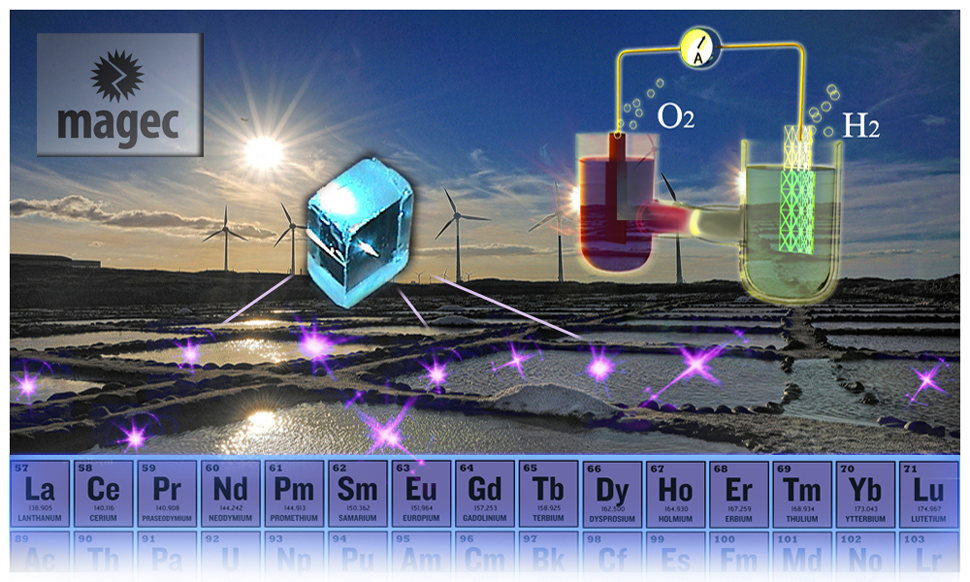
MAGEC
Materiales para una Avanzada Generación de Energía en Canarias
Video Introducción
Resumen:
En el proyecto de investigación MAGEC proponemos una aproximación actual, innovadora y viable al mismo tiempo para mejorar la producción de hidrógeno mediante la fotólisis del agua mediante procesos fotónicos conversión de energía infrarroja a visible-ultravioleta ("up-conversion") en materiales luminiscentes dopados con iones de tierras raras. En este sentido el equipo investigador ha conseguido ya considerables mejoras en sistemas fotocatalíticos basados en óxido de titanio (hasta ahora el fotocatalizador comercial más eficiente), para descomponer contaminantes en agua bajo radiación de tipo solar. MAGEC propone un paso adelante y plantea desarrollar una explotación semi-industrial y sostenible de extracción del hidrógeno del agua de mar, usando las tradicionales salinas como un sistema de foto-reactores solares aprovechando así una infraestructura en desuso y existente en las islas Canarias: una región propicia para el desarrollo de las energías renovables y en concreto para una comunidad basada en el agua y en el sol como únicos motores energéticos. Como valor añadido, MAGEC propone también aprovechar el gran potencial de los recursos minerales de tierras raras existentes en rocas y sedimentos de Canarias, como potencial recurso minero de mínimo impacto y relativo bajo coste de explotación. (J. Méndez-Ramos et al, RSC Advances, 2013, DOI: 10.1039/C3RA44342F)
 Materials for Advanced Generation of Energy
Materials for Advanced Generation of Energy
Intro video
Abstract:
The energy from the sun can be used to split the water in a photo-electrochemical system: photolysis rearranges the low energy bonds of water into high energy bonds of hydrogen and oxygen. The resulting hydrogen can be stored or it can provide power from highly efficient Fuel Cells producing water as final by-product for a sustainable closed circle to meet the terawatt carbon-neutral challenge of the ever increasing demand of energy, reducing CO2 emissions to face global warming threatening for a personalized energy global system. Here we propose a ground-breaking approach to enhance sustainable H2 production via photolysis: the blue shift of the incident solar spectrum by means of high-efficient upconversion in rare-earth (RE) doped luminescent materials to assist long wavelength harvesting of unused portions of sunlight. Activity tests with these RE-doped materials of MAGEC displayed improved photocatalytic action of benchmark TiO2 in the decomposition of pollutants in water under sun-like irradiation, setting the feasibility of our approach of handling and transforming the incoming solar radiation, bridging the gap of photocatalytic semiconductors, as an interesting and not yet fully explored highway. We also envisaged an eventual semi-industrial exploitation for sustainable hydrogen production by means of solar seawater splitting, by using the existing infrastructure of traditional solar salt flats, as a system of shallow seawater pools operating like sun-driven slurry-type photoreactors, available in sunny Canary Islands, an ideal host region for developing a real test for a sustainable renewal energy community (J. Méndez-Ramos et al, RSC Advances, 2013, DOI: 10.1039/C3RA44342F)
EQUIPO (TEAM)
TAREAS (WORK PACKAGES)
Proyecto financiado por el Ministerio de Economía y Competitividad a través de su Programa de Retos I+D y por la Fundación CajaCanarias (01/01/2014 - 31/12/2016)


















